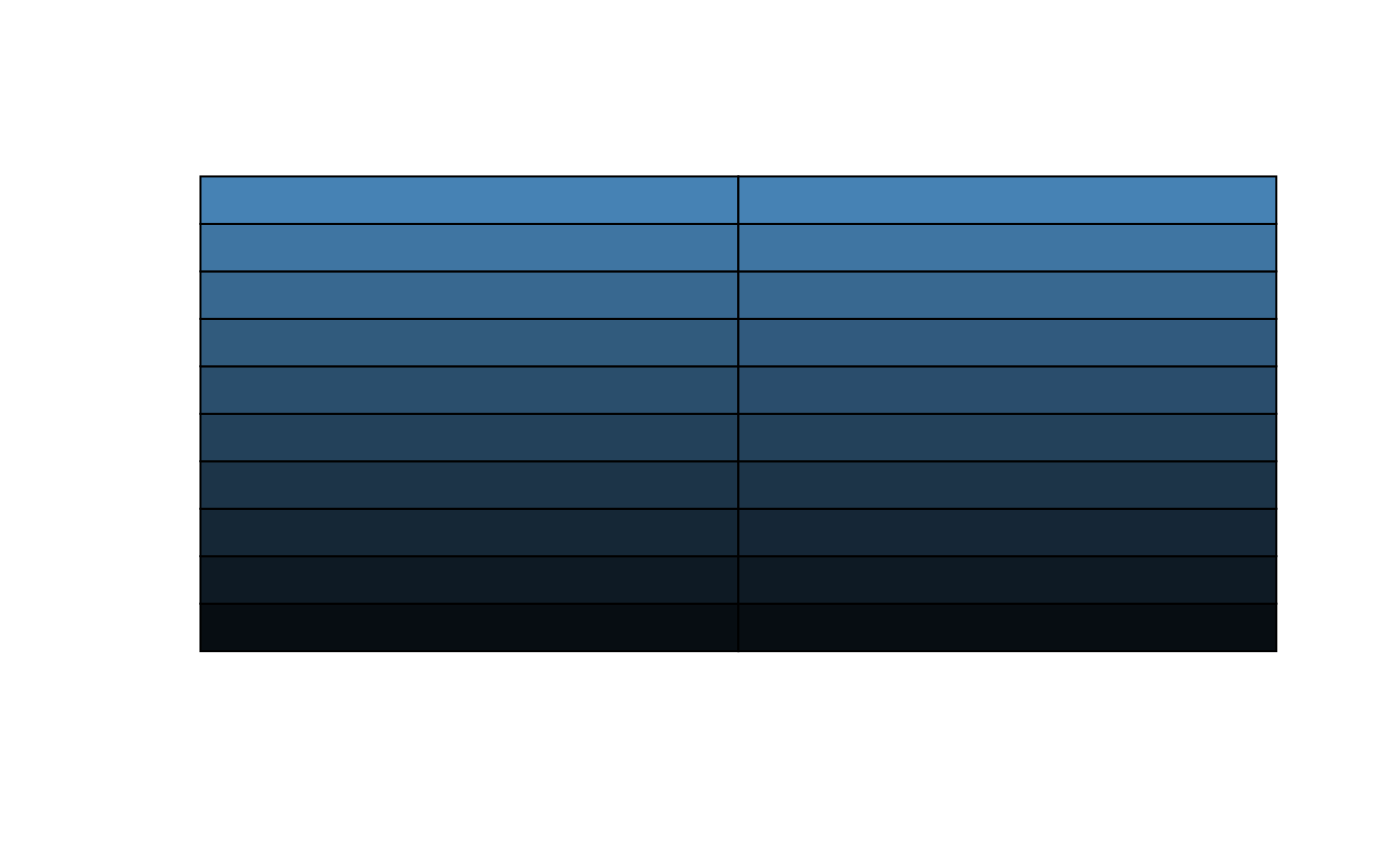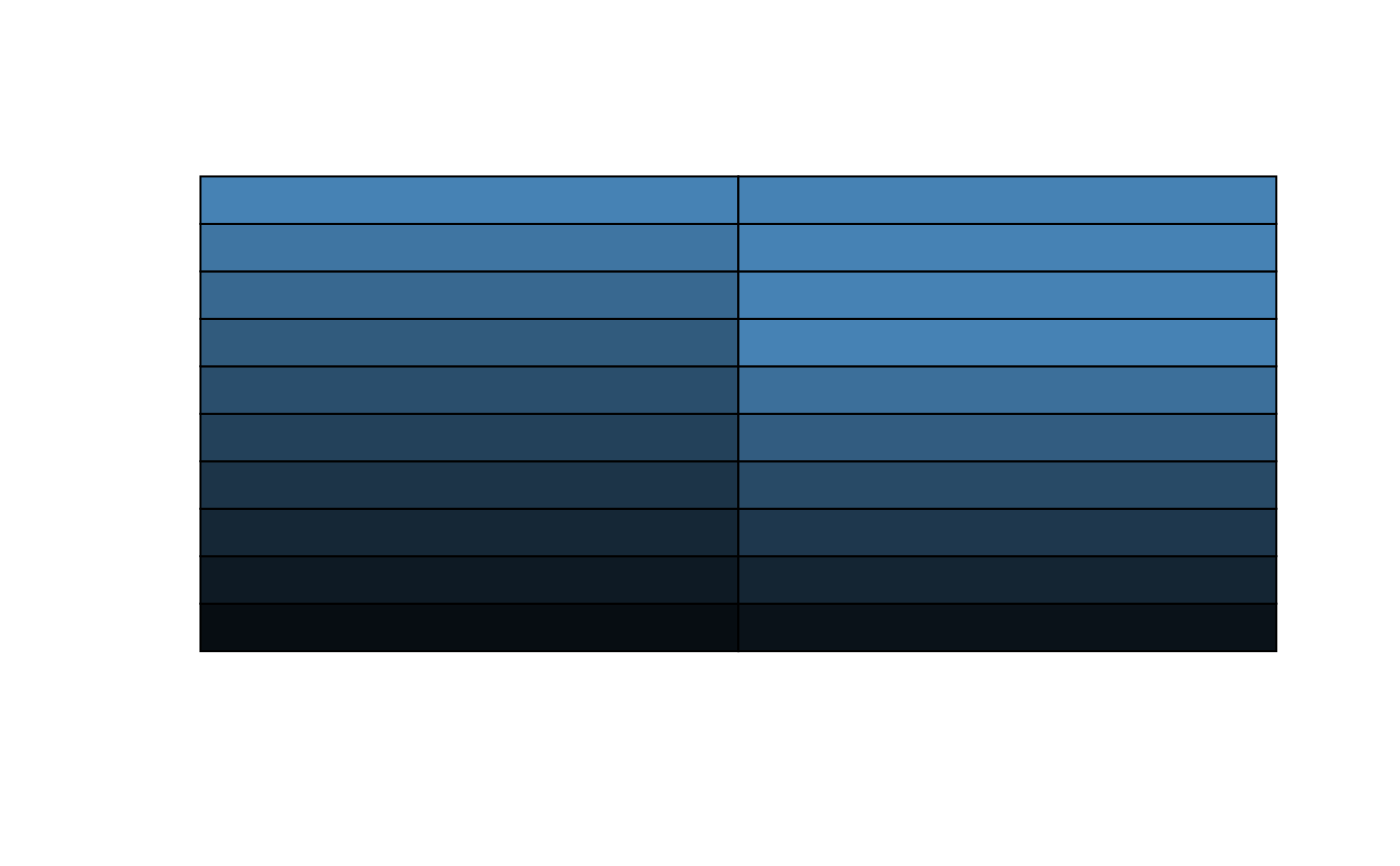A faster implementation of grDevices::colorRamp for linear interpolation.
Source:R/color-paletts.R
colorRamp2.RdA faster implementation of grDevices::colorRamp for linear interpolation.
colorRamp2(x, alpha = TRUE, thresholds = NULL)
Arguments
| x | A vector of colors. |
|---|---|
| alpha | Logical scalar. When |
| thresholds | A numeric vector of length |
Value
A function as in grDevices::colorRamp.
Examples
# Creating a function for 2 colors myf <- colorRamp2(c("black", "steelblue")) f <- colorRamp(c("black", "steelblue")) plot.new()plot.window(xlim = c(0,2), ylim = c(1, 11)) # These should be the same colors rect( xleft = 0, xright = 1, ybottom = 1:10, ytop = 2:11, col = rgb(myf((1:10)/10), maxColorValue = 255) )rect( xleft = 1, xright = 2, ybottom = 1:10, ytop = 2:11, col = rgb(f((1:10)/10), maxColorValue = 255) )# Another example setting different thresholds myf <- colorRamp2(c("black", "steelblue")) myf2 <- colorRamp2(c("black", "steelblue"), thresholds=c(0, .7)) plot.new()plot.window(xlim = c(0,2), ylim = c(1, 11)) # These should be the same colors rect( xleft = 0, xright = 1, ybottom = 1:10, ytop = 2:11, col = rgb(myf((1:10)/10), maxColorValue = 255) )rect( xleft = 1, xright = 2, ybottom = 1:10, ytop = 2:11, col = rgb(myf2((1:10)/10), maxColorValue = 255) )

